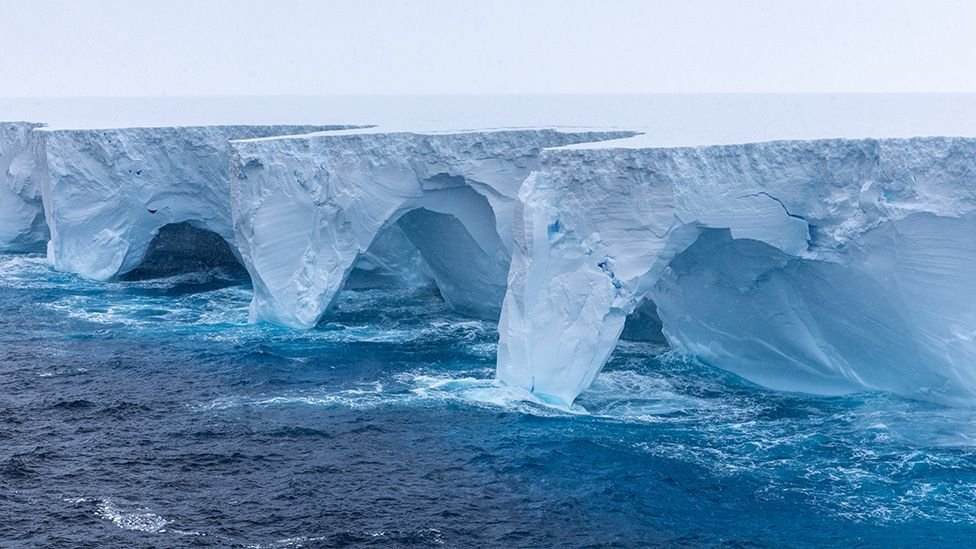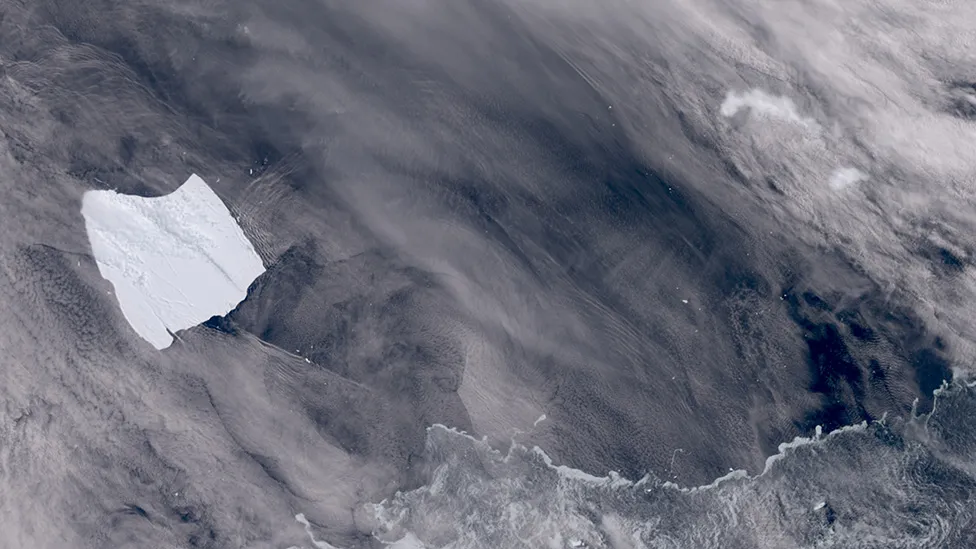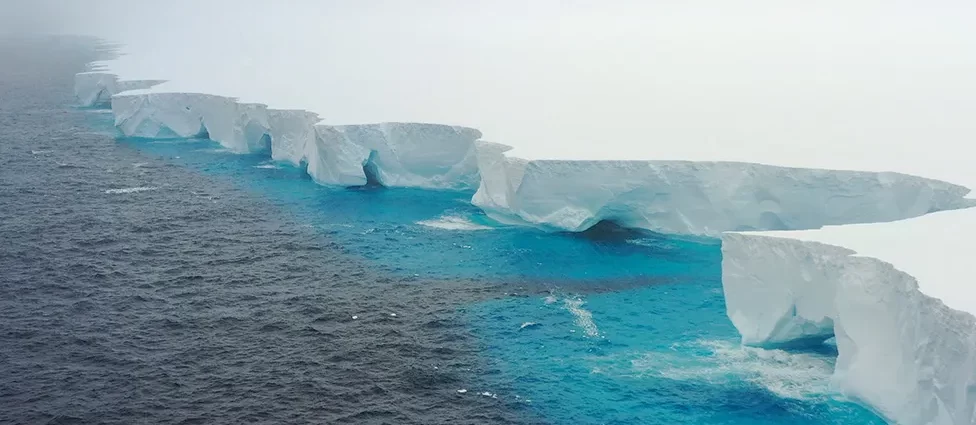The biggest iceberg currently known as A23a is breaking up while it moves away from Antarctica towards warmer waters. Photographers working for travel company EYOS took impressive pictures of a massive iceberg that has been shaped by large waves, creating stunning caves, arches, and structures resembling flying buttresses. This enormous iceberg covers an area of 1,500 square miles and reaches heights comparable to skyscrapers.

“It’s mind-bogglingly big,” EYOS videographer Richard Sidey told the BBC. “I actually don’t think we can fathom just how big it is; we can only know how big it is from science. It’s certainly too big to photograph. It stretches as far as you can see in both directions.”
A23a, a piece of ice that broke off the Filchner-Ronne Ice Shelf in Antarctica in 1986, became stuck in the sea floor. In 2020, signs of movement were detected, but it began moving rapidly in late 2020 due to powerful ocean currents and strong winds.

Is climate change causing the movement of the iceberg? The continent at the southernmost part of the Earth is experiencing significant transformations as a result of global warming, which is causing a decrease in sea ice and the death of many Emperor Penguin chicks.

Scientists have stated that the breakaway of A23a is a natural occurrence in the glacier cycle at Antarctica. This is because calving icebergs are essential in providing the ocean with necessary nutrients. However, they continue to view the breaking off of massive icebergs like A23a as a worrying indication of future events caused by global warming.
Reference- BBC, The Guardian, CNN, Forbes, TIME






